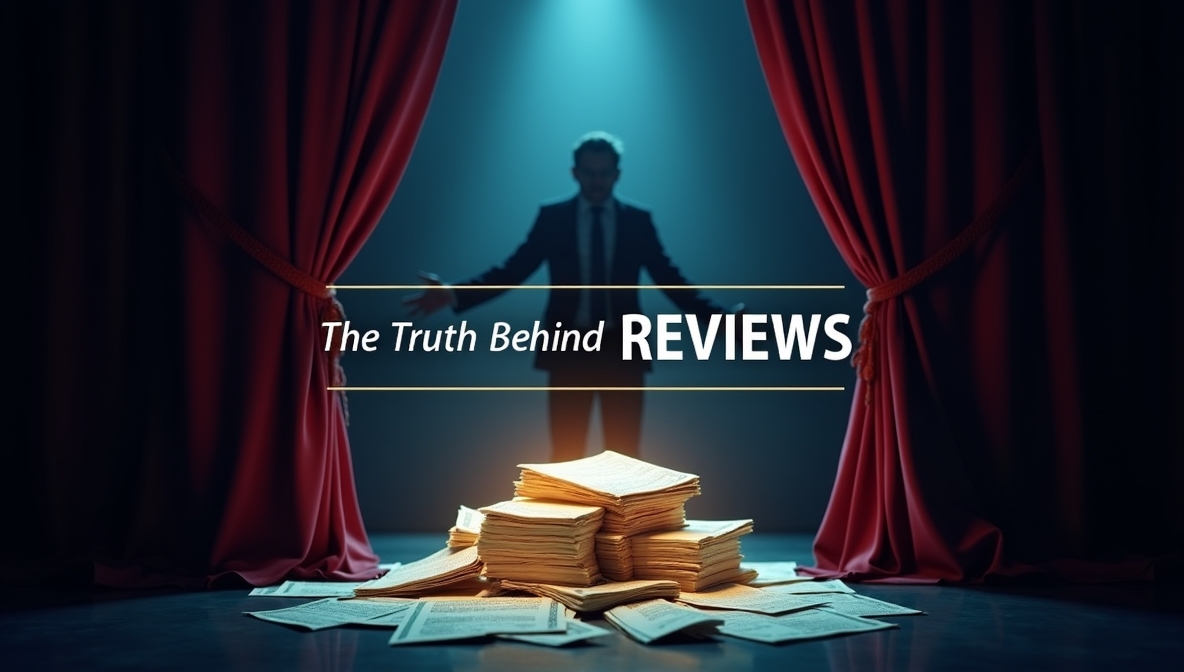The Phone Call You Never Answer
The phone buzzes on the counter, screen down. You don’t need to look. You know the number is from another state, a city you’ve never visited. A cold dread, familiar as your own heartbeat, coils in your gut. It’s not a monster under the bed; it’s a spectre living in your mailbox, in your email inbox, on your voicemail. It’s the weight of what you owe, a constant, humming pressure that colors every sunrise and haunts every sleepless night.
This is the quiet war millions are fighting. But in this war, there are whispers of a truce, a parley with the enemy. It’s a strategy known as debt settlement, a path that promises a clearing in the shadowed forest of financial despair. It’s a promise of paying less, of ending the calls, of breathing again. But every path out of the woods has its own dangers—quicksand, false trails, and predators hiding in plain sight.
The Battlefield at a Glance
Debt settlement is a high-stakes negotiation. You offer a lump-sum payment that’s less than your total unsecured debt (think credit cards, medical bills), and the creditor, weary from the chase, agrees to call it even. It requires you to stop paying them first, intentionally damaging your credit to prove you’re a risk they might want to cut loose. It’s a brutal, often effective tactic, but it comes with a heavy price: a scorched credit score, potential lawsuits, and a surprise tax bill from the IRS for the ‘forgiven’ amount. This is not a gentle stroll toward financial health; it’s battlefield surgery.
The Devil’s Bargain: How It Really Works
There’s a gritty, almost primal logic to debt settlement. It’s a formal agreement where a creditor, faced with the prospect of getting nothing if you file for bankruptcy, agrees to accept a fraction of what you owe to close the books. The debt has to be the right kind—unsecured. That means credit card balances, personal loans, and those soul-crushing medical bills that appear like ghosts after a hospital stay. Your mortgage or car loan? Forget it. Those are secured debts; they’ll just take the house or the car. You don’t get to bargain for things they can easily repossess.
The process feels like a contradiction, an act of financial self-sabotage. You typically stop paying the creditor. On purpose. Then, you funnel that money—and any other scrap you can find—into a separate, dedicated savings account. The phone calls will escalate. The letters will turn from pink to blood-red. Your credit score will plummet like a stone dropped down a well.
This is the grim waiting game. Your accounts become so delinquent, so radioactive, that they get “charged-off” and often sold to a third-party debt collector for pennies on the dollar. Suddenly, that $10,000 debt they bought for $800 looks very different. An offer to pay them $4,000 cash right now isn’t a loss for them; it’s a massive profit. That’s the moment the negotiation begins. That’s when you have leverage.
A Glimpse Into the Abyss
Seeing the brutal math laid out can shift your perspective entirely. The video below cuts through the sales pitches to give you a stark, unvarnished look at the potential triumphs and the very real tragedies associated with debt relief. It’s a crucial briefing before you step foot on this treacherous ground.
Source: National Debt Relief via YouTube
Where the Monsters Hide: The Unseen Costs
Beneath the floorboards of a cheap rental, in a part of town the streetlights barely touch, a young graphic designer stares at his laptop screen. The glow illuminates his face, tight with a familiar, acidic anxiety. He made the jump, hired a company that promised salvation. What they delivered was ruin. This is the story of Boone, but it could be anyone’s.
Boone followed their script. He stopped paying his credit cards. He watched his credit score, once his ticket to a decent apartment, disintegrate. 750. 620. 515. Each update felt like a physical blow. What the friendly voice on the phone failed to emphasize was the silence. Not the silence of resolved debt, but the silence from the settlement company as one of his creditors, tired of waiting, simply sued him.
The certified letter arrived on a Tuesday. It felt heavier than paper ought to. A lawsuit. A court date. The threat of wage garnishment. The settlement company’s response was a shrug in an email. This is the first monster: creditors are under no obligation to play ball. They can and will sue. And suddenly, the fight isn’t about settlement; it’s about your paycheck being carved up before you ever see it.
The second monster is the taxman. Ah, yes. The IRS. That forgiven debt—the several thousand dollars the other creditor eventually settled for—wasn’t a gift. It was income. Boone got a 1099-C form in the mail the next January, a tidy little tax bomb that blew a new hole in his already sinking ship.
And the third, most insidious monster? The very people who promise to help. Predatory firms thrive on desperation. They charge exorbitant fees, make guarantees they can’t keep, and their advice—to stop paying your bills—is the very thing that pushes you over the edge. As the Consumer Financial Protection Bureau (CFPB) warns, many are just sharks circling wounded swimmers.
The Last Resort
The desert air was cool and sharp before dawn, the only light coming from the dash of a Peterbilt rig. Inside, the scent of stale coffee and diesel fumes hung in the air. For months, this cab had been her office, her dining room, and her refuge from the stacks of bills piling up at her sister’s house where she and her son were staying. The debt wasn’t from frivolous spending; it was from a single afternoon when her boy fell from a playground structure, resulting in a shattered arm and a cascade of medical charges her insurance barely dented.
Elena, a long-haul trucker with a fierce love for her son, was a prime candidate for debt settlement, though she didn’t know the term. She had significant unsecured debt—over $25,000 between the hospital and the credit cards she’d used to survive. She was facing dire financial hardship, her income barely covering fuel, food, and the small amount she sent home. Other options were exhausted. Her credit was already taking hits. For her, this wasn’t an abstract financial strategy; it was the only remaining option to avoid the finality of bankruptcy.
Settlement is a tool of last resort. It’s for when you’re already drowning, not for when you just feel the water rising around your ankles. If you’re still making payments, even if you’re struggling, other paths like credit counseling or a formal debt management plan might be the smarter, less destructive choice. They can help you organize and repay your debt, often with reduced interest rates, without deliberately torpedoing your financial life.
The Lone Wolf vs. The Hired Guns
The choice boils down to this: do you walk into the lion’s den alone, or do you pay someone to go with you? Someone who might just use you as a distraction while they run out the back door with your wallet.
Going it alone—the DIY route—is a path of radical self-empowerment. You control the negotiations. You control the funds. You save yourself the thousands of dollars in fees that settlement companies charge. You are the general of your own small army, making every tactical decision. The power is entirely in your hands, and frankly, you’re the only one you can be absolutely certain has your best interests at heart.
But this path requires a spine of steel. You will have to field the calls from collectors, men and women trained to pry money out of you through a mixture of veiled threats, feigned sympathy, and relentless psychological pressure. It demands emotional fortitude and a working knowledge of your rights. It’s not for the timid.
Hiring a company feels safer. It’s outsourcing the horror. But you are trusting a for-profit business with your entire financial future. The horror stories are legion: companies that collect fees for months while doing nothing, letting your situation worsen until you’re facing lawsuits. They have no magic wand. They do exactly what you can do yourself: they stop paying, wait for the delinquency, and then make a lowball offer. Except they charge you a hefty percentage for the privilege.
The Hidden Armor: Your Legal Rights
In his small workshop, the smell of sawdust usually brought peace. But lately, it was just a backdrop for the frantic beat of his own heart. The phone would ring, and the scent of cedar would curdle with the acid of anxiety. The callers were relentless, talking of legal action, of consequences, of ruin. It felt like an assault, and he was defenseless.
What Moses, the soft-spoken carpenter, didn’t know was that he wasn’t defenseless at all. He was wearing armor he couldn’t see. It’s called the FDCPA—the Fair Debt Collection Practices Act. This federal law is a shield. It dictates when and how collectors can contact you. It forbids them from lying, threatening you, or harassing you. The moment you state, in writing, that you refuse to pay or want them to cease communication, they are legally bound to stop, except to inform you of a specific action like a lawsuit.
This knowledge is power. It transforms you from victim to a player in the game. Documentation becomes your sword. Every conversation, every offer, every threat should be noted. And the single most important rule: get the final settlement agreement in writing. Always. An email, a letter—something tangible. It must state the settlement amount and explicitly say that upon payment, the debt will be considered settled in full. Without that paper, you’ve accomplished nothing but giving away your money.
Paths Not Taken: Other Ways Out of the Woods
Settlement is a scorched-earth tactic. Before you burn the fields, survey the entire landscape. There are other debt elimination strategies that may leave more of your financial life intact.
Debt Consolidation: This is about streamlining, not reducing, the principal. You take out one new, larger loan (ideally with a lower interest rate) to pay off all your smaller, high-interest debts. If you want to consolidate credit card debt, this can be a powerful move. You have one payment, one due date, and a clear finish line. It simplifies your life and can save you a fortune in interest, but it requires a decent enough credit score to qualify for that new loan—something settlement candidates often lack.
Structured Repayment Plans: If you have the cash flow but lack the discipline, these methods are your drill sergeant. The debt snowball method has you attack your smallest debts first for quick psychological wins. The debt avalanche method is mathematically superior, targeting your highest-interest debts first to save the most money over time. Both require commitment, not credit destruction.
Bankruptcy: This is the nuclear option. It’s a formal, legal process overseen by a federal court that can wipe out most unsecured debts. It offers immediate protection from creditors via an “automatic stay.” But its impact is devastating and long-lasting, a deep scar on your financial record for up to a decade. Still, for some, it is a more honest and complete reset than the chaotic gamble of settlement.
Weapons for the Fight
Walking into this battle unarmed is suicide. Your two greatest weapons are information and control. You need to know your numbers—cold. Use a debt payoff calculator. Not just any one, but a good one that lets you model different scenarios. What happens if you settle for 40%? What if you consolidate? What does the interest cost you over three years? These tools transform vague dread into a concrete mathematical problem you can solve.
Equally vital is a budgeting app. Mint, YNAB, or even a simple, brutal spreadsheet. You must track every dollar. This isn’t just about finding money for a settlement; it’s about proving to yourself that you are in command of your own resources. It’s the first act of defiance against the chaos.
Manuals from a Secret War
True power comes from knowledge others don’t want you to have. The following books are not light reading; they are field manuals, blueprints for taking the fight directly to your creditors and winning.
The Complete Debt Relief Manual by John Oswald: Consider this the bible for the DIY warrior. It’s a step-by-step guide to navigating the entire process, from budgeting and negotiation to handling lawsuits, all without paying a dime to a settlement company.
How to Legally Settle Your Personal Credit Card Debt for Pennies on the Dollar by Martha Maeda: This book dissects the art of the deal. It focuses specifically on credit card debt, revealing the language and tactics to use when you get a creditor on the phone, turning a position of weakness into one of surprising strength.
Questions From the Trenches
Is debt settlement a good idea?
That’s like asking if jumping from a burning building is a good idea. It’s a terrible idea, unless the alternative is burning to death. Debt settlement is a valid, powerful tool for people with overwhelming unsecured debt, who are already behind on payments, and for whom bankruptcy seems the only other exit. But the collateral damage—to your credit, your taxes, your stress levels—is immense and guaranteed. It’s not “good,” but sometimes, it’s necessary.
Who qualifies for debt settlement?
The gates to this particular hell are ironically narrow. You generally need a significant amount of unsecured debt—think $10,000 or more. You need to be in genuine financial hardship, able to demonstrate you can’t possibly keep up with the original terms. Crucially, you need to be delinquent or on the verge of it. A creditor has zero incentive to settle with someone who is dutifully paying them every month.
How long does this ordeal last?
There is no fixed schedule for financial salvation. The process can last anywhere from a few agonizing months to several grueling years. It depends on how many creditors you have, how aggressive they are, how quickly you can save up a respectable lump sum for an offer, and the fickle, unpredictable nature of the collection agencies you’ll be dealing with.
Armory and Almanac
Your journey doesn’t end here. This is a continuous education in resilience. Use these resources to harden your defenses and chart a course toward a life where you are the master of your money, not its servant. This is the first step on your financial independence roadmap.
- FTC Guide to Getting Out of Debt: The government’s unvarnished advice on dealing with debt and avoiding scams.
- CFPB on Debt Relief Programs: A crucial resource from the nation’s top consumer watchdog on how to vet debt relief programs.
- r/Debt Subreddit: Raw, unfiltered stories and advice from people in the thick of it. Invaluable for seeing how these situations play out in the real world.
- NerdWallet Explainer: A solid, data-driven breakdown of the mechanics of settlement.
Your Next Move
The weight won’t lift itself. The calls won’t stop on their own. The power to change your reality is not in a magical program or a slick sales pitch—it’s in your next decision. Forget everything else for one hour. Sit down with a pen and a blank sheet of paper. Write down every single unsecured debt you have. The total. Don’t flinch. Look at the number.
Now, open your bank account. Look at your income. Look at your expenses. Is there a path to pay off credit card debt with your current plan? Be brutally honest. This single act of confronting the truth is more powerful than a hundred hopeful wishes. It is the first step toward reclaiming your life from the shadows. Take it now.







